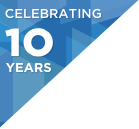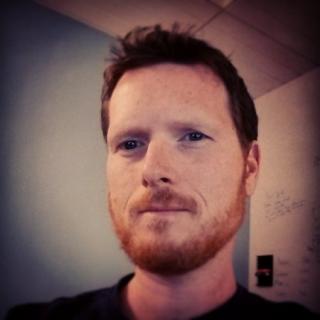Conference: Nov 13-15, 2017
Workshops: Nov 16-17, 2017
Presentation: Next Gen Startup Cultures: Innovating As You Grow
Duration
Persona:
- CTO/CIO/Leadership
- General Software
Key Takeaways
- Learn about what CrowdStrike has done to enable an innovative culture
- Gain ideas for turning from a leader-follower model to a leader-leader model
- Understand the role that senior principals and architects have in culture change
Abstract
In many startups innovation abounds… until you get customers. Customers have practical needs that don't always line up with working on the exciting projects that made you join a startup in the first place. Balancing both is crucial to succeeding.
CrowdStrike is a big data computer security startup that has seen rapid growth in the past few years launching from 30 people to over 450 people across the globe, processing petabytes of data at millions of events per second, backed by investors such as Google Capital and Accel Partners. As a template of a modern company, CrowdStrike has a mixture of large offices, satellite offices and remote employees. Making a strong investment in culture has allowed us to successfully scale our distributed workforce.
I'll share my experience on how we're fostering innovation while also doing what's needed to pay the bills and making sure we're keeping our customers happy and employees engaged. I’ll walk through our culture template as a next-gen distributed company. I’ll share specific culture initiatives, team structures and management ideals that have worked for us such as "No Meeting Thursday", "Think Week", our virtual team structure, the culture team and more. I’ll also share my cultural experiences across several startups and enterprises.
Interview
Jim: I am the Sr. Director of Engineering for the Cloud Team. It’s a technical leadership role that ensures that our technology choices, architecture and culture all align with the company vision and product direction. I’m still in the trenches with engineering on a daily basis, so I stay very mindful of issues that affect our engineering teams.
Jim: I’ve seen first hand over the 20 years I’ve been in engineering how culture can make or break a company or product. It is a huge competitive advantage in today’s market to have passionate, engaged employees. I believe there’s a trend for the model of the next-generation of companies that start distributed with a focus on culture. There are different challenges and benefits with that model; many relate to how you define and support a remote culture, how you continue to support that culture as you start to build offices where you have groups of people, and how you maintain a feeling of innovation and inclusiveness when sometimes you have to do the not so fun work.
Jim: I hope to provide concrete structural changes we put in place to help develop and maintain a positive culture while still focusing on being innovative. I’ll cover some of the challenges we faced going from 30 to 500 people and how things have evolved over the last few years. I’ll talk in detail about how our product development process is shaped by the culture we want to promote, including having no dates in engineering and why that works for us. I’ll also share many good tips we’ve learned from our journey. You should definitely walk away with a few good ideas to bring back to your own team including how you can start turning things from a leader-follower model to a leader-leader model.
Jim: We implemented a no-meeting Thursday to enable engineers to have a long span of heads down time. As you scale the company, you are going to start adding connection points, you are going to have to talk to additional divisions and other larger teams and that inevitably manifests in more meetings which diminish productivity. Engineers love to feel productive, so we’re giving people a set day where they control their calendar.
If you want to meet with your own team for the main project you are working on, that’s the team’s decision but there are no scheduled meetings. Managers can’t schedule a meeting for you on that day. That’s sort of heads down and be as productive as you can. I will cover the logistics of how that came about, when we started that, how that was adopted across the company.
We have another thing called Think Week, which is like a hack week but applies across the company. It’s not just engineering but also how Finance, Customer Support, and other groups in the company can innovate and how can we work across the organizations. As an example: engineering working with our intelligence division, breaking down silos. I’ll talk about how we rolled out that concept of “the company takes a week off” and some of the challenges that came with that.
Jim: Onboarding is one of the challenges we’re focused on tackling today. We’ve started an onboarding process six months ago where we actually bring all the new hires in every month to a local office and we spend a few days going over the company mission, how things work, how all the departments work, how everything fits together to give them that fresh start. We are including culture aspects in that as well but there are additional things that we can work on to improve that process. Executives fly in and meet the new folks, first hand.
Jim: That’s an interesting question because when we started, the Netflix culture deck was really engrained in our heads. That’s a culture a lot of companies wanted to duplicate and still do. But you really can’t just adopt a culture. It definitely does not work that way and it’s not a passive thing that just happens in a company. You have to be very thoughtful on what kind of culture you want to build and how you are going to act day to day to reinforce the values you want to instill. Culture is built with consistent behaviors, not passing around other people’s presentations to adopt.
One of the things we did early on was form a “culture team” with representatives from across all the departments. We defined what we wanted CrowdStrike to be, what were the values that brought us here and how could we change our structure and processes to reinforce and incentivize those values. The culture team works with the executives to ensure a bottoms up approach is taken.
A lot is all based on the people you start with, what their beliefs are. Luckily we have a pretty broad culture team. We have got teams in Europe and in other places, to help us get an understanding how culture plays out across geography. It gets really interesting when you find things that don’t work well across countries. You have to find what is the culture you want to build towards, what things will work in your environment and what won’t.
Facebook has the culture of "move fast and break things". We secure Fortune 500 companies from the most advanced threats in the world. If we break things, people lose their jobs or worse. It's not about being able to broadly adopt other people’s cultures; the best thing is to learn what others are doing, find ideals that align with your values and find how you can make that successful in your company and more importantly, what are the things you are going to do to re-enforce that kind of culture.
Similar Talks


.
Tracks
Monday Nov 7
-
Architectures You've Always Wondered About
You know the names. Now learn lessons from their architectures
-
Distributed Systems War Stories
“A distributed system is one in which the failure of a computer you didn't even know existed can render your own computer unusable.” - Lamport.
-
Containers Everywhere
State of the art in Container deployment, management, scheduling
-
Art of Relevancy and Recommendations
Lessons on the adoption of practical, real-world machine learning practices. AI & Deep learning explored.
-
Next Generation Web Standards, Frameworks, and Techniques
JavaScript, HTML5, WASM, and more... innovations targetting the browser
-
Optimize You
Keeping life in balance is a challenge. Learn lifehacks, tips, & techniques for success.
Tuesday Nov 8
-
Next Generation Microservices
What will microservices look like in 3 years? What if we could start over?
-
Java: Are You Ready for This?
Real world lessons & prepping for JDK9. Reactive code in Java today, Performance/Optimization, Where Unsafe is heading, & JVM compile interface.
-
Big Data Meets the Cloud
Overviews and lessons learned from companies that have implemented their Big Data use-cases in the Cloud
-
Evolving DevOps
Lessons/stories on optimizing the deployment pipeline
-
Software Engineering Softskills
Great engineers do more than code. Learn their secrets and level up.
-
Modern CS in the Real World
Applied, practical, & real-world dive into industry adoption of modern CS ideas
Wednesday Nov 9
-
Architecting for Failure
Your system will fail. Take control before it takes you with it.
-
Stream Processing
Stream Processing, Near-Real Time Processing
-
Bare Metal Performance
Native languages, kernel bypass, tooling - make the most of your hardware
-
Culture as a Differentiator
The why and how for building successful engineering cultures
-
//TODO: Security <-- fix this
Building security from the start. Stories, lessons, and innovations advancing the field of software security.
-
UX Reimagined
Bots, virtual reality, voice, and new thought processes around design. The track explores the current art of the possible in UX and lessons from early adoption.











